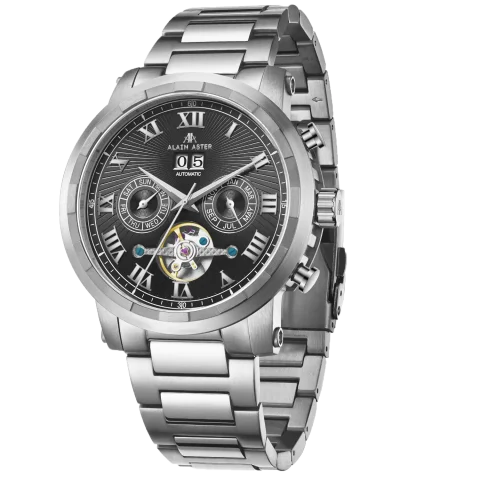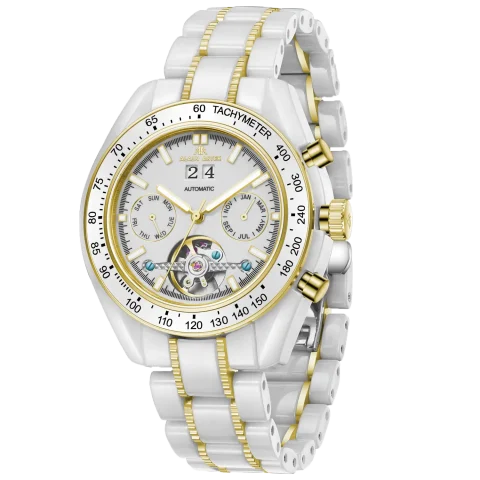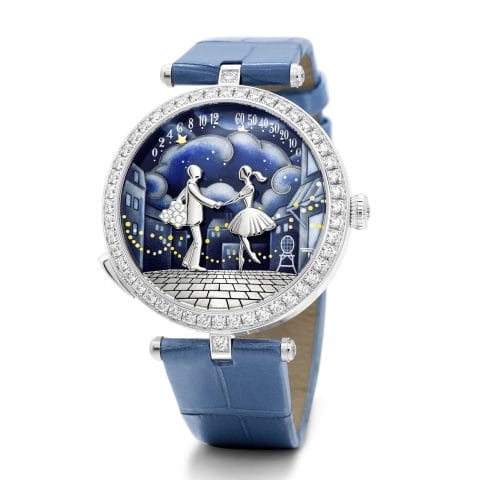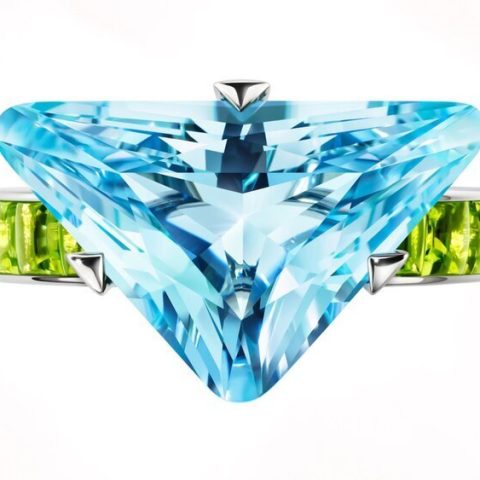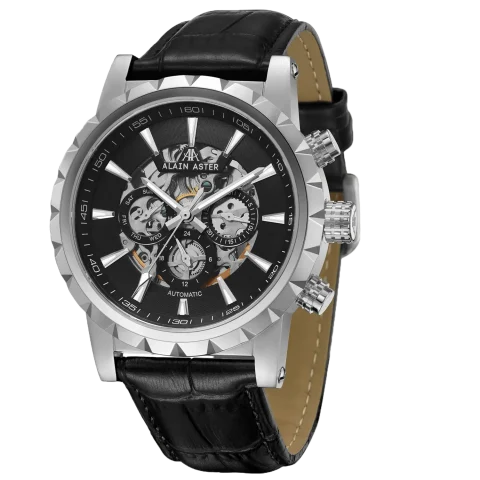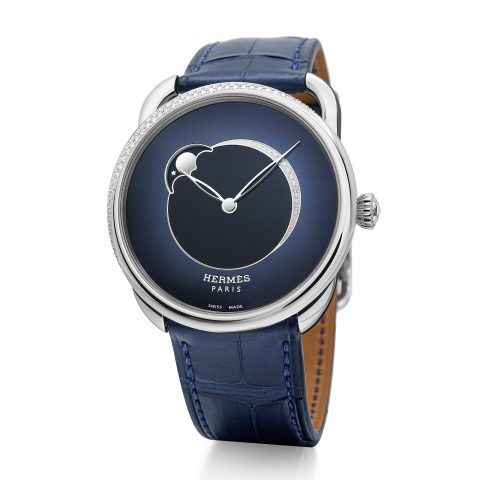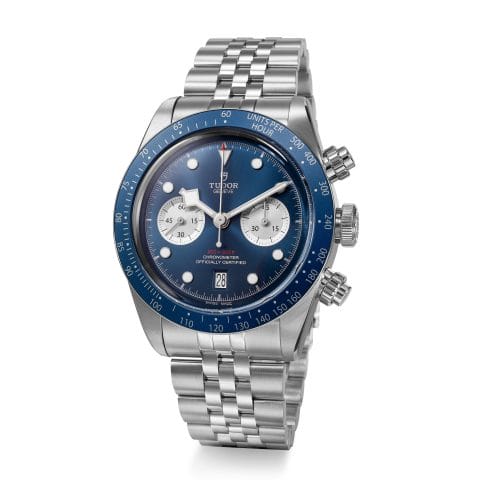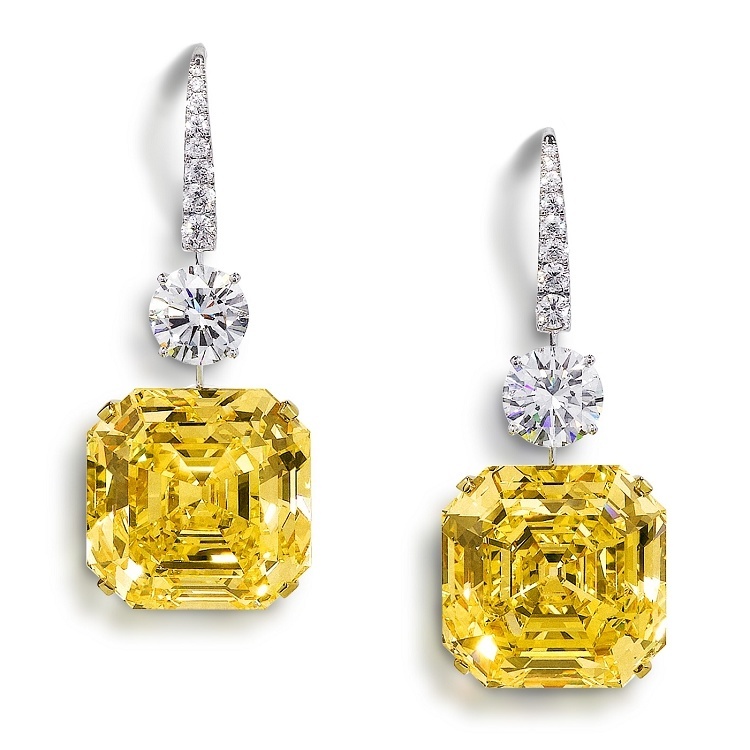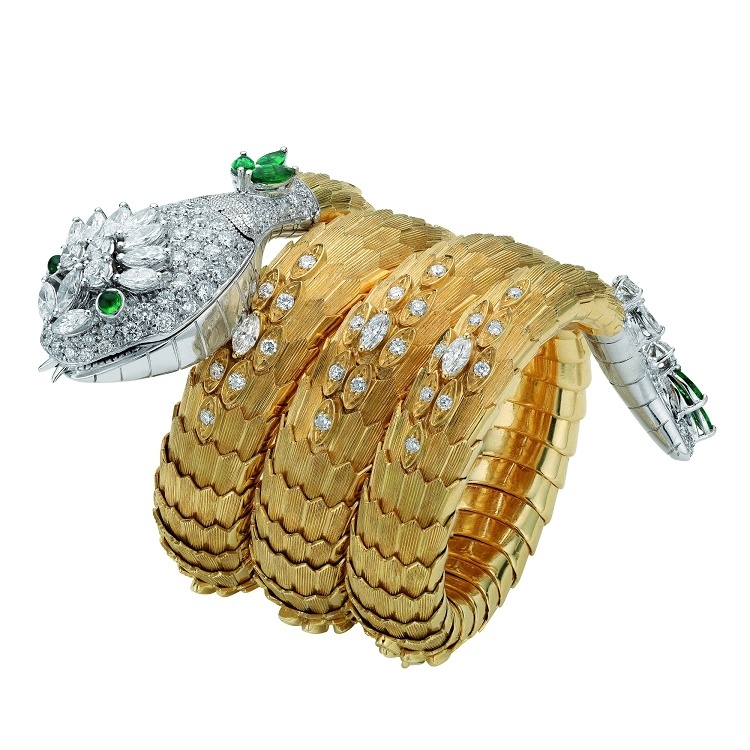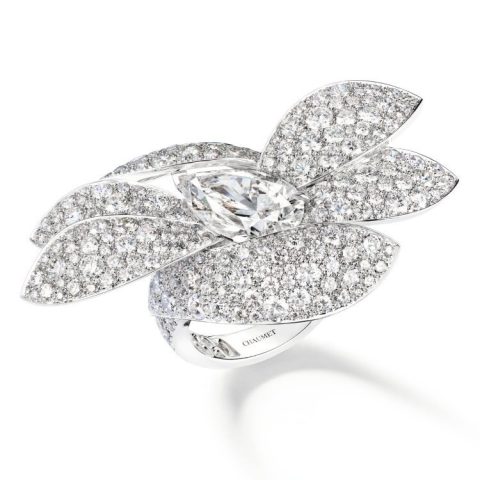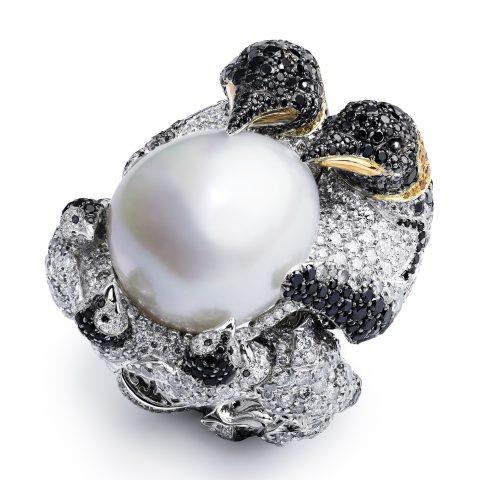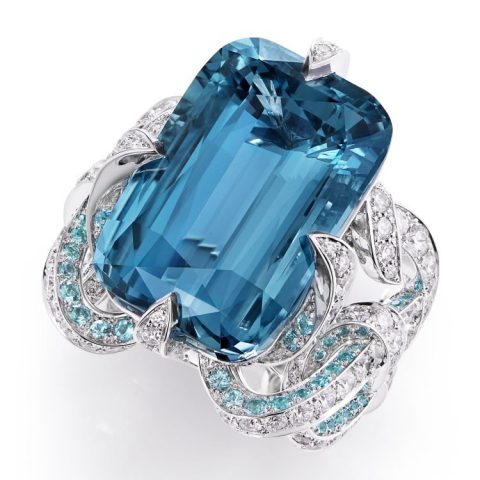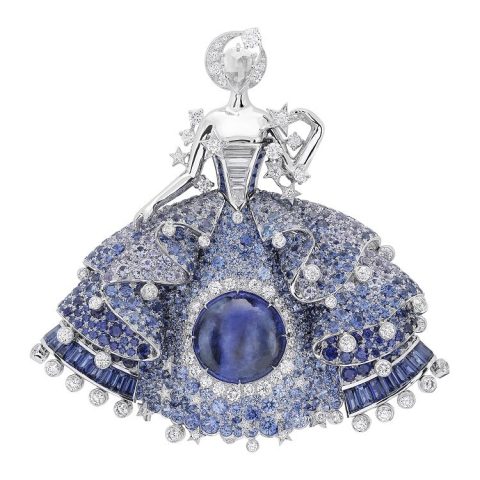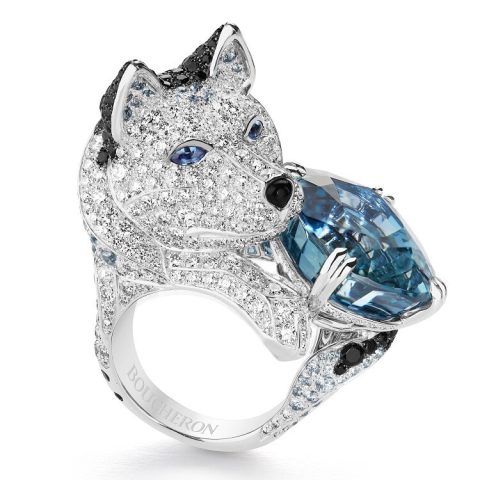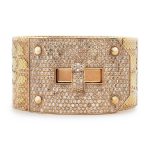This gold ring from Hermès’ Niloticus high jewelry collection is named 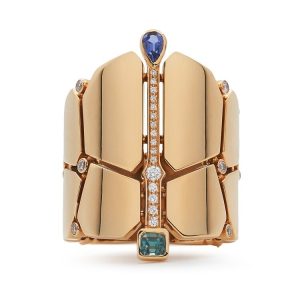 after the revered and worshipped Nile Crocodile of ancient Egypt. The designer has intricately crafted the ring using gold “scales” that are linked together, mimicking the textured appearance of crocodile skin in a grid-like pattern.
after the revered and worshipped Nile Crocodile of ancient Egypt. The designer has intricately crafted the ring using gold “scales” that are linked together, mimicking the textured appearance of crocodile skin in a grid-like pattern.
In ancient Egypt, pharaohs kept the Nile Crocodile in temple pools, adorning them with luxurious jewelry and treating them as divine beings. During the Old Kingdom period (2686–2181 BCE), the Nile Crocodile was even named after the pharaoh’s dynasty and used as a symbol for Upper Egypt’s 6th Dynasty.
The designer captures the essence of the Nile Crocodile 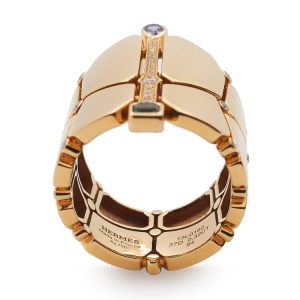 through the use of detailed scales, employing gold, the oldest precious metal, to add a historical aura to the piece. The ring consists of 16 uniquely shaped scales, perfectly fitting together, with small round diamonds placed in the gaps between them, reminiscent of the decorations created by ancient Egyptians for the Nile Crocodile.
through the use of detailed scales, employing gold, the oldest precious metal, to add a historical aura to the piece. The ring consists of 16 uniquely shaped scales, perfectly fitting together, with small round diamonds placed in the gaps between them, reminiscent of the decorations created by ancient Egyptians for the Nile Crocodile.
The ring features a symmetrical design, with a scepter of gemstones at the center. This symbolizes the ancient Egyptian reverence for the Nile Crocodile. At the ends of the scepter, the designer has set an Iolite (with its striking violet color and multi-colored qualities) and a Beryl gemstone cut in the shape of an emerald. The Iolite is prized for its rich, clear purple hue, while the green Beryl—a relative of emerald—contains iron, giving it a lighter, fresher green shade.




